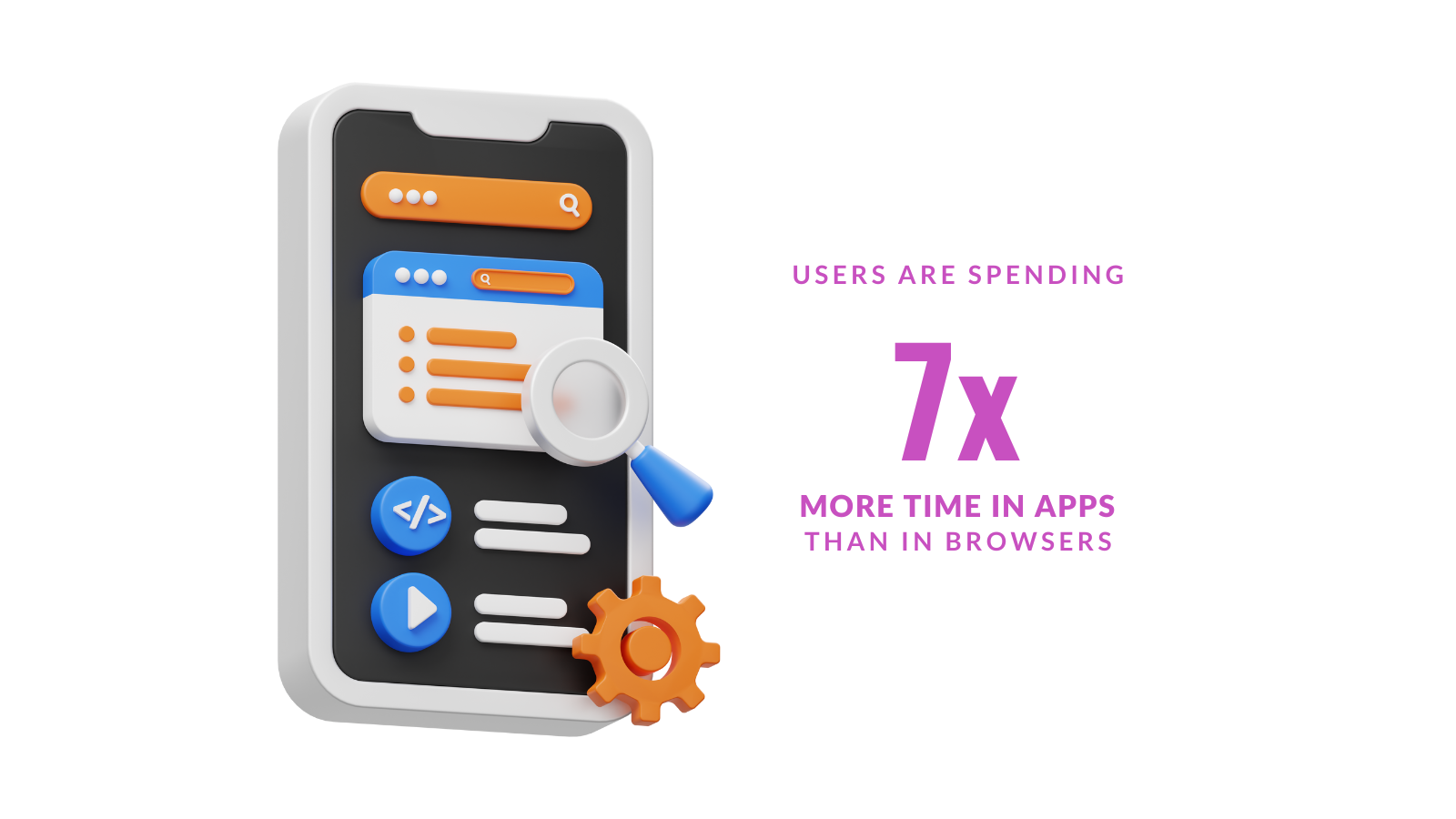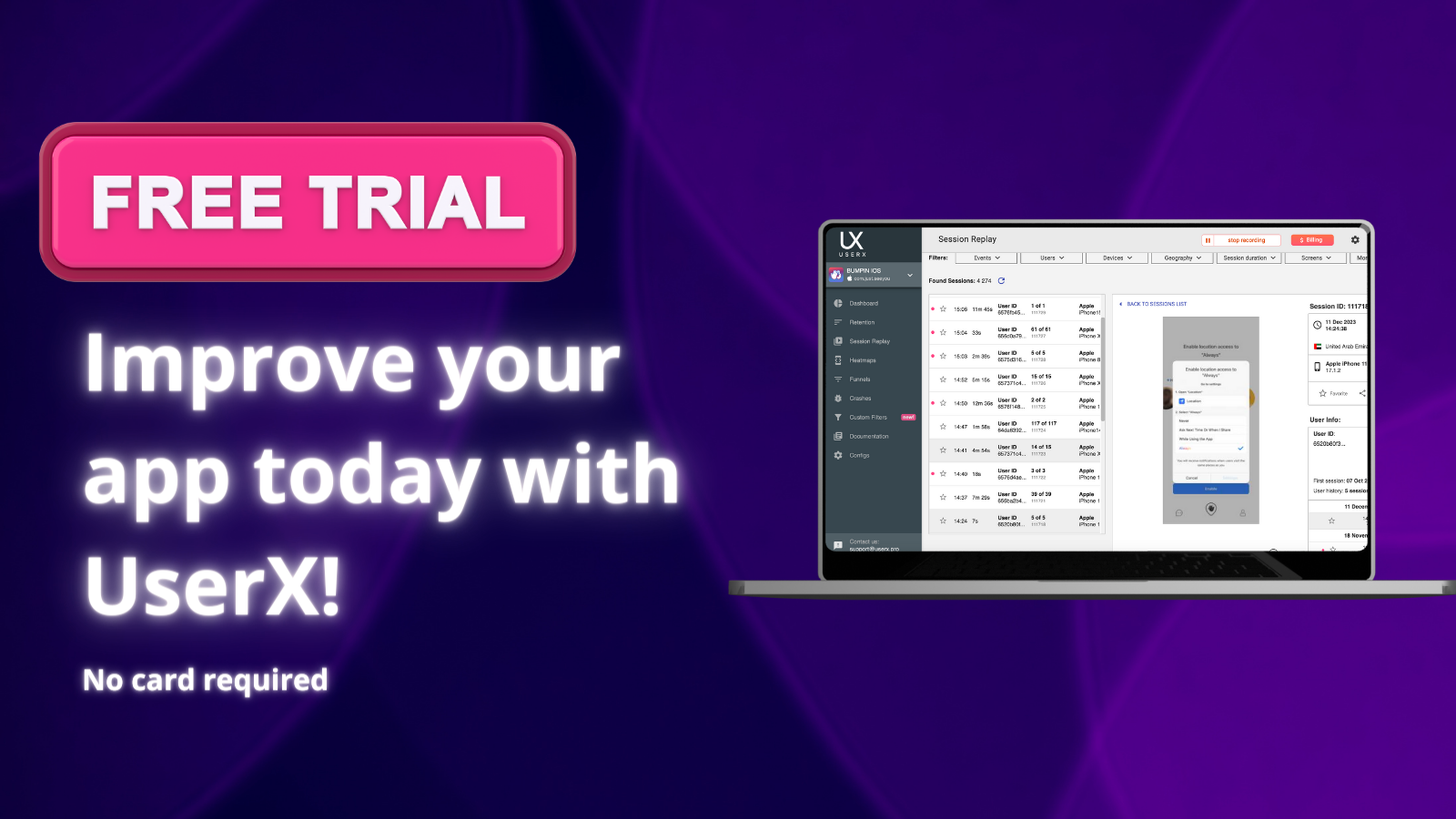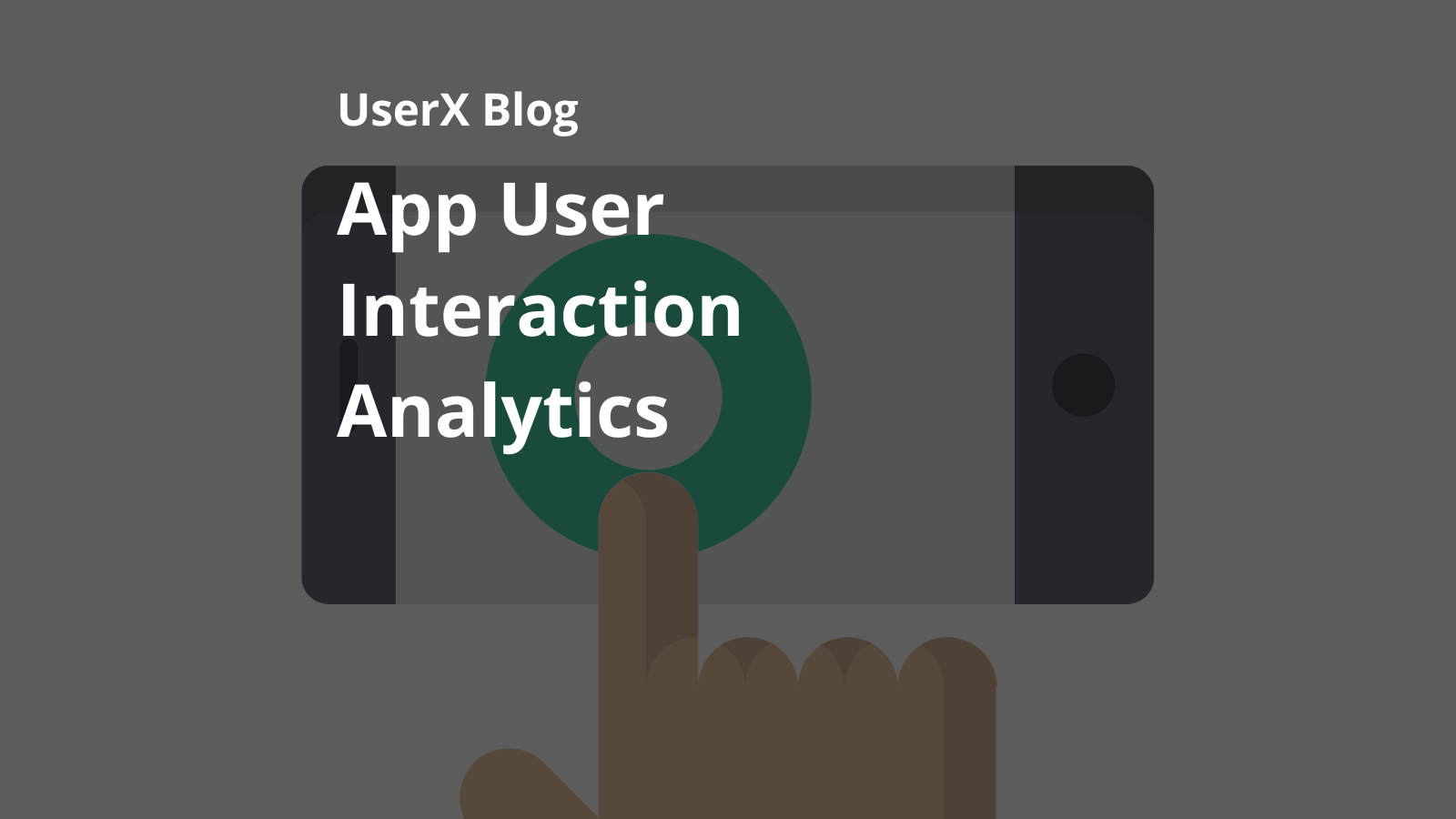Table of Contents
- Introduction to App User Interaction Analytics
- How to Track User Activity on an App
- Analyzing User Behavior in Mobile Apps
- Tools for User Interaction Analysis
- Using UserX for Enhanced Interaction Analytics
- Understanding App Analytics
- Conclusion: The Future of App User Interaction Analytics
- FAQ - App User Interaction Analytics
Introduction to App User Interaction Analytics
In today's rapidly evolving mobile app industry, understanding how users interact with your app is not just beneficial – it's essential. This is where app user interaction analytics comes into play. At its core, this analytics domain focuses on comprehensively studying and interpreting the ways in which users engage with mobile applications – a field often referred to as mobile app interaction study.
Delving into user interaction analytics means exploring a vast array of user behaviors - from simple taps and swipes to complex navigational patterns and feature usage. This analytics not only provides valuable insights into user preferences and habits but also unveils areas of an app that are performing well or need improvement. It serves as a crucial tool for developers and marketers to optimize the user experience, increase engagement, and drive higher retention rates.
In a market where user attention is fleeting and competition is intense, App User Interaction Analytics stands as a beacon, guiding the way to more engaging, user-friendly, and successful mobile applications. It's not just about collecting data; it's about translating that data into actionable insights that can propel an app to new heights of success.

By amity.co
How to Track User Activity on an App
One of the fundamental questions in app development and optimization is: "How do I track user activity on an app?" The answer lies in effective user in-app activity analysiss and a thorough understanding of app user behavior metrics.
To start tracking user activity, developers and analysts focus on collecting a variety of data points within their application. These include user interactions like clicks, swipes, and navigation paths, as well as more nuanced behaviors like time spent on specific screens or features. By employing tools and technologies designed for user activity tracking, such as heatmaps or event trackers, developers can gather comprehensive data about how users are interacting with their app.
Once the data is collected, the next step is analysis. This is where App User Behavior Metrics come into play. These metrics might include engagement rates, session lengths, and frequency of app usage. By analyzing these metrics, developers can gain insights into user behavior patterns, preferences, and pain points. This analysis helps in making informed decisions to improve the app's design, functionality, and overall user experience.
In conclusion, tracking user activity on an app involves a combination of data collection and analysis. By focusing on user in-app activity and behavior metrics, developers can gain valuable insights that drive improvements and contribute to the app’s success.

Analyzing User Behavior in Mobile Apps
The process of analyzing user behavior in mobile apps is a critical aspect of enhancing user engagement and overall app success. Incorporating analytics of app user engagement and examining user interaction data in apps are key to this process. But how exactly do you analyze user behavior in mobile applications?
The first step in analyzing user behavior is gathering data. This data includes user interaction metrics such as app session durations, frequency of app usage, in-app actions (like button clicks or feature usage), and user navigation paths within the app. Advanced analytics tools are employed to capture this comprehensive data set, which forms the basis for meaningful analysis.
Once the data is collected, the next phase is analysis. This involves using various analytical methodologies to extract insights from the collected data. Techniques like cohort analysis, user segmentation, and funnel analysis come into play here. Cohort analysis, for instance, helps in understanding how different groups of users interact with the app over time, while funnel analysis can pinpoint where users drop off in the conversion process.
In addition to these techniques, predictive analytics can be used to forecast future user behaviors based on historical data. This predictive approach is particularly useful in identifying potential user churn and areas for improvement in the app experience.
By utilizing these methodologies in analytics of app user engagement, app developers and marketers can gain a deep understanding of how users interact with their app. This understanding is crucial in making informed decisions to enhance user engagement, optimize app features, and ultimately drive success in the competitive mobile app market.
Tools for User Interaction Analysis
When it comes to tracking user behavior in mobile apps, the right tools can make all the difference. Utilizing mobile application interaction tracking and engaging in interaction analysis in mobile applications are essential strategies for gaining insights into user behavior. But what tools are available, and how do they help in tracking this crucial data?
Event Trackers: These tools record specific actions users take within the app, such as button clicks, form submissions, or feature usage. Event trackers provide granular data about how users interact with individual elements of your app.
Heatmaps: Heatmaps visually represent where users are interacting most within your app. This tool is particularly useful for understanding which areas of your app are attracting the most attention and which are being overlooked.
Session Replay Tools: These tools record user sessions, providing a playback of user interactions within the app. Session replays are invaluable for understanding the user experience from a user's perspective, identifying usability issues, and improving app design.
Analytics Dashboards: Comprehensive analytics platforms aggregate various user interaction data points into a single dashboard. These dashboards offer a high-level view of user behavior patterns, engagement trends, and other key performance indicators.
User Feedback Tools: Integrating user feedback tools, such as surveys or feedback forms within the app, can provide direct insights from the users about their experience and behavior.
By integrating these tools into your app's framework, you can gain a comprehensive understanding of how users are interacting with your app. This understanding is crucial for making data-driven decisions to enhance the user experience, increase engagement, and ultimately drive the success of your mobile application.
Using UserX for Enhanced Interaction Analytics
In the realm of app user interaction analytics, UserX stands out as a versatile and powerful tool. By leveraging the robust features of UserX, developers and analysts can gain an unparalleled understanding of user interactions within their mobile apps. Let's delve into how UserX's key features aid in this critical analytical process.
Customer Journey Analysis: UserX offers detailed insights into the customer journey within the app. This feature allows for tracking the complete path a user takes, from initial app launch to specific interactions, leading up to conversion points or drop-offs. Understanding these journeys is crucial for identifying user preferences and pain points, enabling targeted improvements.
Session Recordings: One of UserX's standout features is session recordings. This functionality records user sessions, providing real-time insight into how users interact with various app elements. These recordings are instrumental in understanding user behavior, identifying usability issues, and enhancing user experience based on actual interactions.
Conversion Funnels: UserX's conversion funnel analysis helps in pinpointing where users are dropping off in the app's conversion process. By analyzing these funnels, developers can identify and rectify the hurdles in the user journey, thereby optimizing the conversion pathways and improving overall app performance.
Crash Replays: UserX also provides session recordings of application crashes. This feature is vital for quickly identifying and reproducing technical errors, allowing for rapid resolution of issues that could significantly impact user experience and retention.
Screen Flows: The screen flow analysis in UserX gives an overview of how users navigate through different screens within the app. This feature helps in understanding which screens are most engaging and how the flow can be optimized to enhance user interaction and engagement.
By integrating UserX into their analytics strategy, app developers and marketers can benefit from a comprehensive suite of tools designed to dissect and understand every facet of app user interaction. From observing individual user behaviors to analyzing broad interaction trends, UserX provides the insights needed to refine user engagement strategies and drive app success.

Understanding App Analytics
App analytics play a pivotal role in the modern mobile app landscape, providing critical insights into user behavior and app performance. By incorporating 'User Touchpoints Analytics in Apps' and examining 'Interaction Metrics in Mobile Apps,' we can obtain a comprehensive view of how users interact with mobile applications.
At its core, app analytics refers to the collection, analysis, and interpretation of data generated by user interactions within a mobile app. This data encompasses a wide range of metrics, including user engagement levels, session durations, frequency of app usage, and specific actions taken within the app, like button clicks or feature usage.
User Touchpoints Analytics is particularly crucial as it focuses on every point of interaction between the user and the app. These touchpoints can range from the initial app launch to in-app purchases, from viewing content to using specific features. By analyzing these touchpoints, app developers can understand which aspects of the app are most engaging or need improvement.
Similarly, Interaction Metrics in Mobile Apps provide valuable insights into how users are interacting with the app. These metrics help in identifying patterns, such as the most commonly used features, navigation paths within the app, and points where users may encounter difficulties.
Through app analytics, developers and marketers can gain a deep understanding of user preferences and behaviors. This understanding is crucial for optimizing the user experience, increasing user engagement, and improving overall app performance. App analytics thus serves as a foundation for making data-driven decisions that can significantly enhance the success of a mobile app.
Conclusion: The Future of App User Interaction Analytics
As we conclude our exploration of App User Interaction Analytics, it's clear that this field is not just a current necessity but also a cornerstone for the future of mobile app development. The insights derived from user interaction analytics have become indispensable for crafting engaging, user-friendly, and successful mobile applications.
Looking ahead, the future of app user interaction analytics is poised for significant advancements. We can anticipate the integration of more sophisticated AI and machine learning algorithms, which will provide even deeper insights into user behavior. These technologies will enable more predictive analytics, offering foresight into user trends and behaviors before they fully manifest.
Another emerging trend is the personalization of user experiences. As analytics tools become more refined, they will allow for the creation of highly personalized app experiences tailored to individual user preferences and behaviors. This will not only enhance user satisfaction but also drive higher engagement rates.
Furthermore, we can expect a surge in real-time analytics, enabling app developers to make swift, data-driven decisions. This immediacy will be crucial in dynamic market environments, allowing apps to adapt quickly to user feedback and changing trends.
In essence, the future of App User Interaction Analytics is one of greater precision, deeper understanding, and more proactive engagement strategies. As the technology evolves, so too will the capabilities of apps to connect with users in more meaningful and impactful ways.
FAQ - App User Interaction Analytics
What is App User Interaction Analytics?
- App User Interaction Analytics involves studying and interpreting how users engage with a mobile application. It includes tracking user actions like clicks, swipes, and navigation paths, and analyzing this data to understand user behavior and improve app functionality.
How do I track user activity in an app?
- User activity in an app can be tracked using various tools such as event trackers, heatmaps, session replay tools, and analytics dashboards. These tools collect data on user interactions, which can then be analyzed to understand user behavior and improve the app experience.
What tools are used for User Interaction Analysis in mobile apps?
- Tools for User Interaction Analysis include event trackers, heatmaps, session replay tools, analytics dashboards, and user feedback tools. They help in capturing detailed data about how users interact with various elements of the app.
How does UserX assist in App User Interaction Analytics?
- UserX assists in App User Interaction Analytics through features like customer journey analysis, session recordings, conversion funnels, crash replays, and screen flows. These tools provide insights into user behavior, help identify issues and areas for improvement, and optimize user engagement.
What is the importance of User Touchpoints Analytics in Apps?
- User Touchpoints Analytics is important as it helps in understanding every point of interaction between the user and the app, from initial app launch to specific actions. It provides insights into which aspects of the app are engaging or need improvement.
What are Interaction Metrics in Mobile Apps?
- Interaction Metrics in Mobile Apps are data points that indicate how users are interacting with the app. These include metrics like engagement levels, session durations, frequency of app usage, and specific in-app actions.
What future advancements are expected in App User Interaction Analytics?
- Future advancements in App User Interaction Analytics may include the integration of AI and machine learning for predictive analytics, increased personalization of user experiences, and the rise of real-time analytics for immediate, data-driven decision-making.



